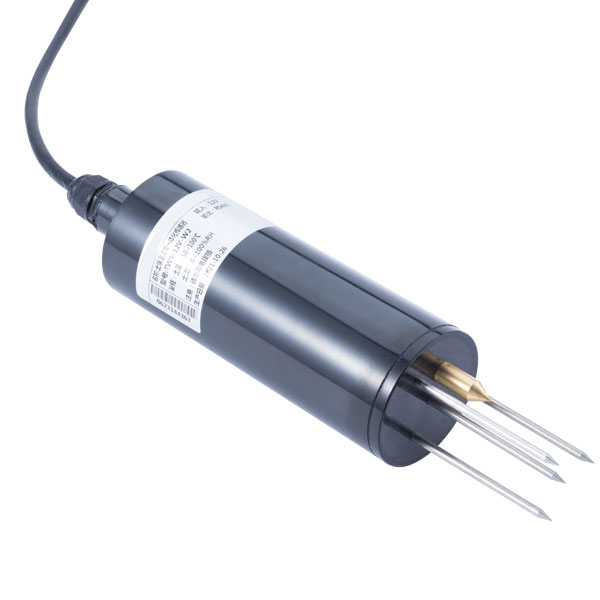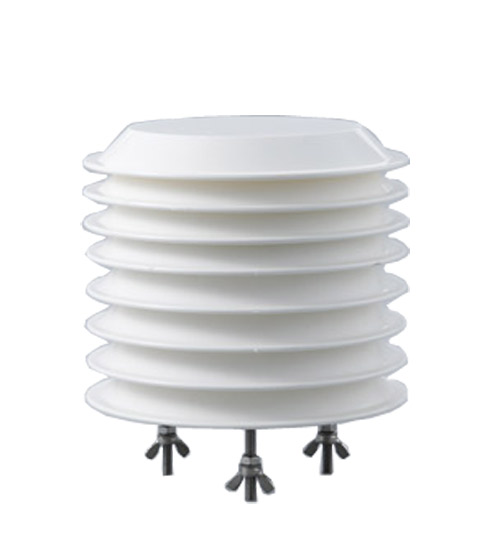

 Consumer hotline +8618073152920
Consumer hotline +8618073152920 WhatsApp:+8615367865107
Address:Room 102, District D, Houhu Industrial Park, Yuelu District, Changsha City, Hunan Province, China
All products
Pyranometer Measurement of radiation perpendicular to the surface of the sun (angle of view approx. 0.5°) and the scattered radiation from a very narrow ring of sky around the sun is called direct solar radiation and is measured with a direct radiation sensor.
Product Details
Overview of the Automatic direct radiation Sensor :
The measurement of radiation from the vertical surface of the sun (angle of view approx. 0.5°) and the scattered radiation from the narrow ring of sky around the sun is called direct solar radiation and is measured with the Automatic direct radiation Sensor.
Principle and structural features:
The Pyranometer consists mainly of a light cylinder and an automatic tracking device. The inside of the light barrel is composed of seven light bars, an inner barrel, a thermopile and a desiccant barrel. The seven light bars are used to reduce internal reflections, to form the opening angle of the instrument and to limit the turbulence of the air inside the instrument.
On the outside of the light bars is the inner barrel, which seals the dry air inside the light bars and the outer barrel to reduce the effect of ambient temperature on the thermopile. At the mouth of the outer barrel is a JGS3 quartz glass sheet which transmits radiant light at wavelengths of 0.27-3.2µm, facilitating direct solar radiation measurements. The barrel is fitted with a desiccant to prevent the formation of water vapour condensate.

The sensing element of the Direct Pyranometer is the core of the optical cylinder and consists of a fast responding wire-wound plated thermopile. The sensing component is coated with non-glossy black paint on the side facing the sun, below which is the hot contact of the thermopile. When sunlight hits the hot contact, the temperature rises and it creates a temperature difference with the cold contact on the other side, resulting in an electric potential which is proportional to the intensity of the direct solar radiation.
Pyranometer technical parameters:
Measuring range: 0~2000 W/m2
Signal output: 0~20mV
Measurement accuracy: working table <5%; standard table <2%
Sensitivity: 7~14μV∕W.m-2
Time constant :≤15S(99%)
Tracking accuracy: <168h±1°
Power supply: DC 12V
Output: Voltage: 0-5V
Annual stability: ±1% (rate of change of sensitivity)
Operating environment: -45℃~+45℃
Instrument line length: 2.5m
Opening angle: 4°
Product weight: 5Kg
Product power consumption: 50 mW

Automatic direct radiation Sensor installation method:
1. The installation site of the Automatic direct radiation Sensor must ensure that direct sunlight is not affected by any obstacle in all seasons and times (from sunrise to sunset), and if there is an obstacle, the height angle of the obstacle must not exceed 5° in the direction of sunrise and sunset, as well as avoiding places with serious atmospheric pollution such as smoke and fog.
The Pyranometer is usually placed in the observatory together with other Pyranometers, but can also be placed on a roof terrace. The table should be installed firmly, even if subjected to severe shocks and vibrations (such as high winds) should not change the horizontal state of the instrument. The tracking accuracy of the direct Pyranometer is related to the accuracy of the installation.


2. The automatic tracking device is set up symmetrically on both sides, with the side marked with A being the side where the smart chaser is mounted. The bottom connection of the smart tracker is also marked so that the two marker arrows are in the same direction and the four corresponding bolts can be tightened.
3. The other marked side is the direct radiation table (i.e. light cylinder) installation side, the connection method is the same as the smart chaser.
4. Attach the completed automatic tracking device to the four leveling bolts of the round base on the radiation joint bracket. (Note: the direction of the square base of the autotracking device is aligned to north on the side with the north pointing mark).
5. Adjust the light point on the light cylinder so that the light point is projected through the small hole on the upper edge of the light cylinder to the lower edge of the "ten" light point positioning can be.



Use and maintenance :
1, direct Pyranometer compared with other Pyranometer, not only sensitive induction parts, but also accurate tracking, in order to obtain accurate direct radiation. It is not easy to keep constant, accurate and reliable tracking of the sun in any weather conditions all year round, so strict operating procedures should be followed.
2、The quartz glass window of the optical cylinder should be checked for cleanliness at the beginning of each day's work. If there is dust or water vapour condensation, it should be blown with an ear-sucking ball or wiped clean with a soft cloth or optical lens paper in time.
3、The work should be checked once a month for tracking and timely adjustment (to the light point).
4, the instrument is a precision instrument, in strict accordance with the operating procedures for debugging, never use excessive force, careful and light, reduce vibration, so as not to damage.
5, Pyranometer used for more than two years, its sensitivity must be re-calibrated by the manufacturer or measurement department.

Sensors & Weather Stations Catalog
Agriculture Sensors and Weather Stations Catalog-NiuBoL.pdf
Weather Stations Catalog-NiuBoL.pdf
Related recommendations
 Soil Temperature Moisture Sensor 4-···
Soil Temperature Moisture Sensor 4-··· Air temperature, humidity and atmos···
Air temperature, humidity and atmos··· High precision soil pH sensor pH de···
High precision soil pH sensor pH de···
Screenshot, WhatsApp to identify the QR code
WhatsApp number:+8615367865107
(Click on WhatsApp to copy and add friends)